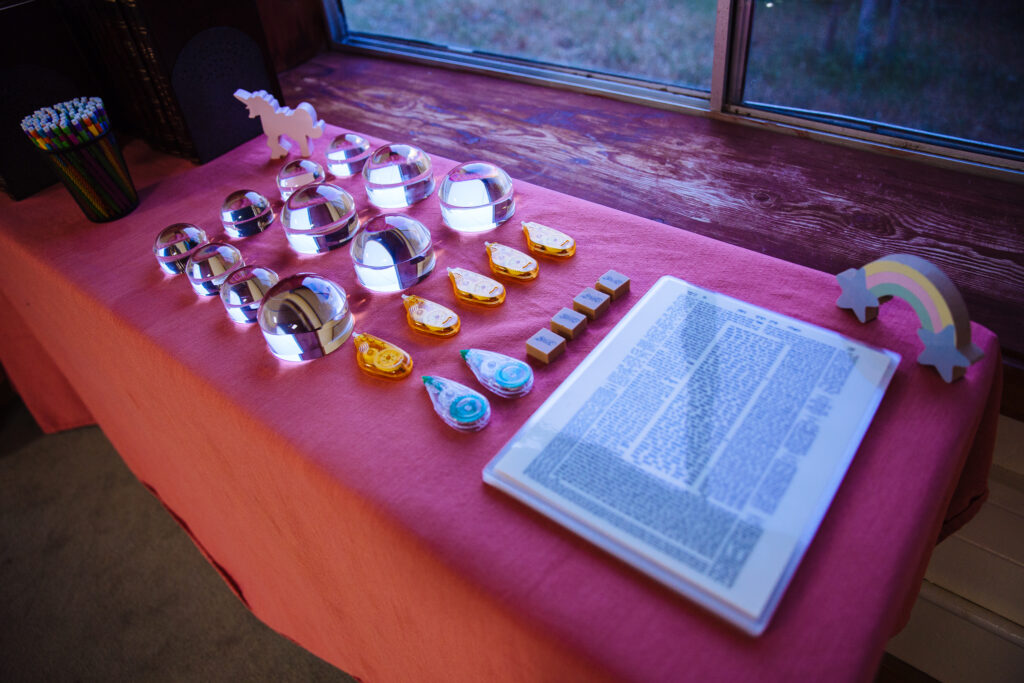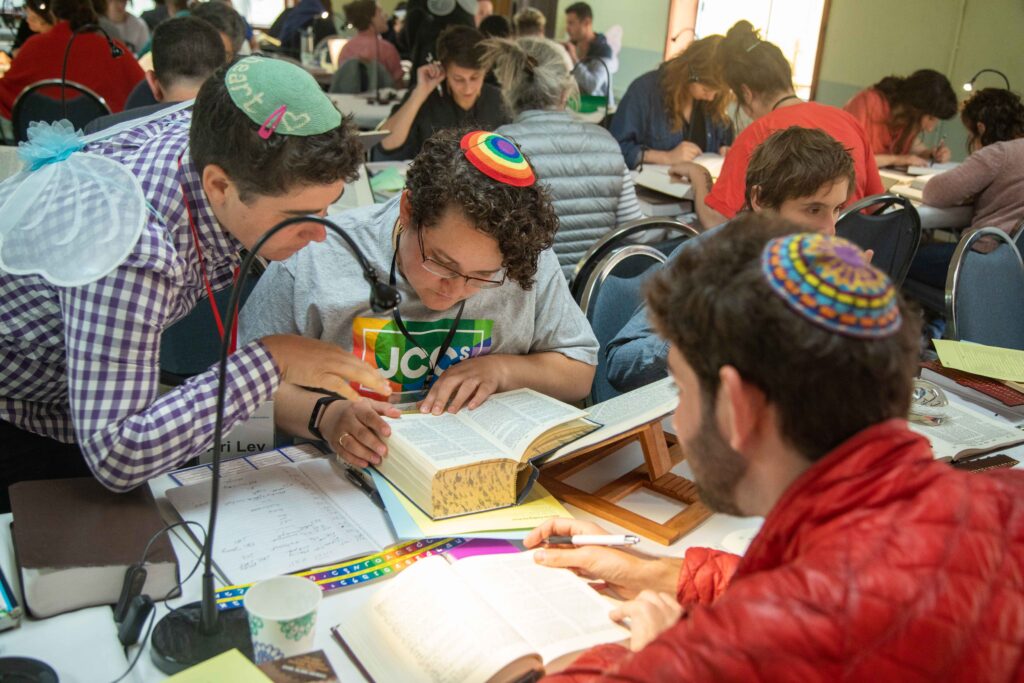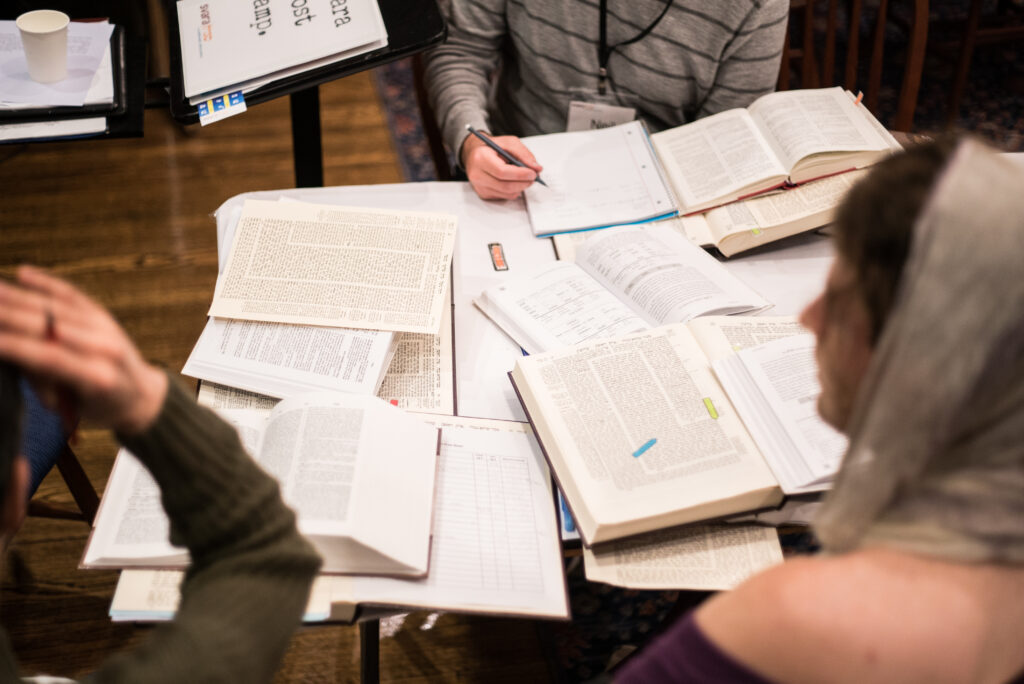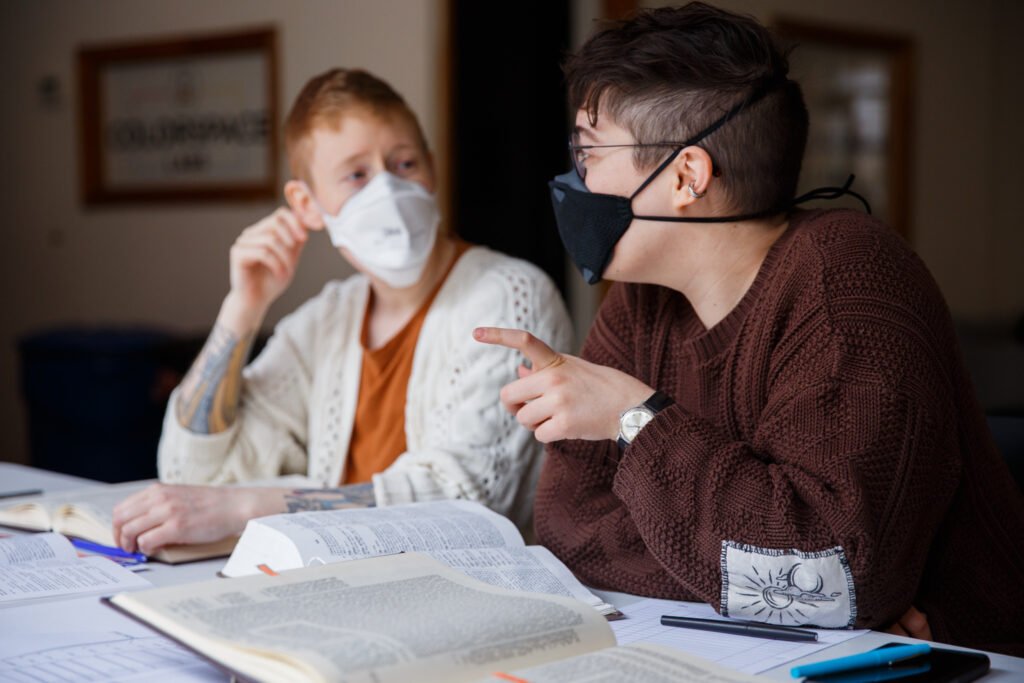I’ve been having conversations with friends and loved ones about what makes Jews a people. Especially as I find myself moving between and among various Jewish communities, I’ve been wondering how much continuity and alignment is required across time/practice/culture/beliefs/values/fill-in-the-blank to be able to recognize a person or community and say, “You are mine and I am yours.” And what happens when you don’t—or can’t—recognize a person in that way, but you call yourselves by the same name?
It comes as no surprise that the Rabbis were wrestling with those questions, too. In Menachot 29b, Rav Yehudah offers an account of Moses time traveling to Rabbi Akiva’s yeshiva. There in the eighth row, listening to the teacher expound on the meanings of the crowns of the letters, Moses realizes that he has no clue what’s going on. Upon hearing Rabbi Akiva say that his teachings were derived from the Torah of Moses, he feels at ease.
Back in the presence of G!d, Moses asks about what he just witnessed.
אמר לפניו רבונו של עולם יש לך אדם כזה ואתה נותן תורה ע”י
“Ribono shel olam, you have a man like that, and yet you give the Torah through me?”
Naturally, G!d’s response leads to more questions than answers.
אמר לו שתוק כך עלה במחשבה לפני
G!d said to him, “Hush. This plan rose before me.”
Despite the lack of clarity in G!d’s response, it is clear that the Rabbis understood change to be an essential feature of the tradition. There is something deeply empowering about this text. It invites us to search for the throughline from our own lives and practices to those of our ancestors, and to hold onto the hope that there will continue to be a throughline forward in time as well. At SVARA, we often talk about the “unrecognizable Jewish future.” When we think about the rabbinic project, we highlight its potential for transformation and how we carve out room for ourselves in the tradition.
Eager to see what such a learned life leads to, Moses asks G!d to see Rabbi Akiva’s reward. Again, Moses travels into the future. This time, however, he is horrified to learn of the gruesome and violent end to Rabbi Akiva’s life.
אמר לפניו רבש”ע זו תורה וזו שכרה
Moses said before G!d, “This is Torah and this is its reward?”
G!d offers the same mysterious response.
א”ל שתוק כך עלה במחשבה לפני
“Hush. This plan rose before me.”
Akiva’s life and Torah is only possible because of Moshe’s, my life and my Torah is only possible because of Akiva’s (and so many others). The more I sit with this, the more I wonder whether the unrecognizable Jewish future is really that unrecognizable.
Recently, my partner told me the story of when they received the weekday tallis that belonged to their great-grandfather, Papa Isaac. After wearing it on Yom Kippur, my partner remembers their grandfather saying, “He wouldn’t have understood, but he would have been proud.” To see a love of tradition span across four generations of my family is something I hope to experience one day, G!d willing.
Papa Isaac came to the United States as a child. He spoke Yiddish as his first language and lived his life in a way that you might call Orthodox, or simply, “traditional.” When my partner shared this memory with me, they were confident that yes, Papa Isaac would be proud of them – and he would certainly be confused. Separated by a span of 100 years, we are part of a Judaism that would be unrecognizable to him.
I can only imagine that, after learning his Torah, Moses felt a real, deep love for Rabbi Akiva. Perhaps similar to the love that my partner’s great grandfather would have felt for them, had they had the opportunity to meet. It’s a love borne out of recognition; I am yours, and you are mine. And it’s in that love where the grief lies. Had Judaism been stagnant from Sinai onward, Akiva could not have existed. Had Judaism been stagnant from the time of Papa Isaac’s life onward, we could not have existed in it without compromising core parts of who we are.
In Ashon Crawley’s eulogy for Little Richard, which also serves as an exploration of blackqueer grief, he writes about experiencing “grief because even after attempts to sever connection, relation is still real, and there, and possible.” That the relation exists, that there remains a shred of possibility means that there is necessarily something recognizable about the lives our ancestors lived and the lives that our descendants will live. Rather than thinking of our Judaisms as unrecognizable, I am beginning to think about our ever-evolving and expanding tradition through the framework of illegibility.
As I understand it, this illegibility allows for the recognition of the component parts of a shared tradition while acknowledging that, no matter how much I may want to, and how deeply I love all of my Jewish people, I sometimes find myself unable to read myself into a shared experience without giving up a piece of myself. In other words, it’s the awareness that produces cognitive dissonance.
Presently, I find myself in a heightened experience of illegibility. The world is changing (it always is). Judaism is changing (it always is). I have to believe that, though the path may be winding, we are moving toward a way of being that is in right relationship to the Divine, to our planet and to each other. Getting there, however, requires allowing ourselves to honor the grief of our ancestors, and to honor our own grief for investing in a way of life that will inevitably be changed by those who come after us.







